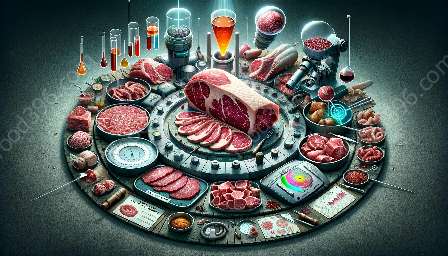Meat quality evaluation is an essential aspect of meat science, and part of this evaluation involves analyzing the nutritional composition of the meat. This article delves into the significance of nutritional composition analysis in evaluating meat quality, exploring the various parameters and techniques involved, and highlighting the crucial interplay between meat science and meat quality evaluation.
The Significance of Nutritional Composition Analysis
Nutritional composition analysis plays a vital role in evaluating the overall quality of meat products. From determining the nutritional value to assessing the safety and authenticity of meat products, a comprehensive analysis of the nutritional composition is indispensable in ensuring consumer satisfaction and public health.
Parameters of Nutritional Composition Analysis
The nutritional composition of meat encompasses various parameters, including macronutrients (protein, fats, and carbohydrates), micronutrients (vitamins and minerals), amino acid profiles, fatty acid profiles, cholesterol content, and moisture content. Each of these parameters contributes to the overall nutritional quality and consumer acceptability of the meat product.
Techniques for Nutritional Composition Analysis
Several analytical techniques are employed to assess the nutritional composition of meat. These include proximate analysis for determining macronutrient content, spectrophotometric methods for assessing vitamin content, inductively coupled plasma mass spectrometry for mineral analysis, gas chromatography for fatty acid profiling, and enzymatic methods for amino acid analysis. Advanced technologies such as nuclear magnetic resonance spectroscopy and near-infrared spectroscopy are also being utilized to streamline the analysis process.
Interplay with Meat Quality Evaluation
The nutritional composition of meat directly influences its quality attributes, such as tenderness, juiciness, flavor, and shelf-life. For instance, the protein content affects the tenderness and juiciness, while the fat content contributes to the flavor and mouthfeel of the meat. By understanding the nutritional composition, meat scientists are better equipped to predict and improve the overall quality of meat products.
Embracing Advanced Analysis Techniques
Incorporating advanced analytical techniques, such as metabolomics and proteomics, into nutritional composition analysis allows for a more comprehensive understanding of meat quality. These high-throughput technologies enable the simultaneous analysis of multiple compounds, providing a holistic view of the nutritional composition and its impact on meat quality.
Regulatory Implications and Consumer Awareness
Accurate nutritional composition analysis is critical for complying with regulatory standards and meeting consumer demands for transparent labeling and information. By ensuring the accuracy and authenticity of nutritional claims, the meat industry can build trust and confidence among consumers.
Conclusion
In conclusion, nutritional composition analysis is an integral component of meat quality evaluation, bridging the gap between meat science and the assessment of meat quality. By comprehensively analyzing the nutritional parameters and embracing advanced techniques, the meat industry can enhance the overall quality, safety, and transparency of meat products, ultimately catering to the evolving needs of consumers and regulatory authorities.

